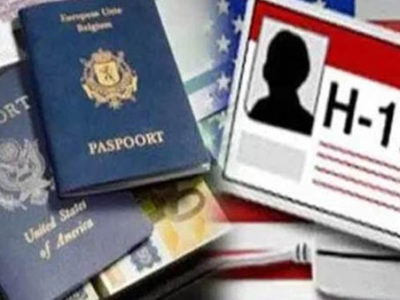
In recent years, the proliferation of fake news and misinformation on social media platforms has become a significant concern for governments around the world. The Indian government is no exception, with officials taking steps to combat this problem by cracking down on fake YouTube channels that mislead users. According to an announcement from the Ministry, several such channels have been banned in Rajkot – a city in Gujarat – due to their dissemination of false information.
The move comes as part of a broader effort by the Indian government to regulate online content and prevent it from being used to spread disinformation or incite violence.
Explaining ban on fake YouTube channels
The Indian government recently announced a ban on fake YouTube channels that mislead users. The Ministry of Electronics and Information Technology stated that these channels were being used to spread false information and propaganda, which can create social unrest and harm the country’s reputation.
The ban targets channels that have been found to use misleading thumbnails, titles, descriptions and tags to attract viewers. These channels often impersonate legitimate sources of news or entertainment, leading users to believe they are watching credible content when in fact it is not.
YouTube has also taken steps to combat fake channels by implementing stricter policies for creators. These policies include requiring more detailed information about the creator’s identity and verifying their account before allowing them to upload videos. By cracking down on fake YouTube channels, both the government and the platform aim to promote transparency and prevent disinformation from spreading online.
The Ministry’s announcement:
rajkotupdates.news: a-ban-on-fake-youtube-channels-that-mislead-users-the-ministry-said, The Ministry of Information and Broadcasting recently made an announcement regarding the ban on fake YouTube channels that mislead users. The ministry has been taking strict measures to curb the spread of misinformation and fake news on social media platforms, including YouTube.
The move comes as a response to an increasing number of fake channels that have been found spreading false information, propaganda, and malicious content. These channels often use clickbait titles or misleading thumbnails to lure unsuspecting viewers into watching their videos.
The ministry has warned that any channel found guilty of violating the guidelines will face legal action. This announcement serves as a reminder for content creators and influencers to verify their sources before sharing any information online. The government’s efforts to combat fake news are commendable, but it is also important for individuals to take responsibility for what they share online.
Details of the ban and its purpose
The Ministry of Information and Broadcasting in India recently announced a ban on fake YouTube channels that mislead users. The ban comes as part of the government’s efforts to tackle the spread of false information and propaganda online. The ministry stated that these fake channels often present themselves as genuine news sources, but in reality, they are promoting misinformation.
The purpose of the ban is to ensure that users have access only to reliable and trustworthy information on YouTube. It is aimed at preventing individuals or organizations from spreading propaganda or malicious content through fake channels that appear legitimate. The ministry has also urged users to report any suspicious activity on YouTube so that necessary action can be taken against those who violate the ban.
Overall, this ban serves as a reminder for internet users to be cautious about the sources they trust online and highlights the importance of combating disinformation in today’s digital age. While it remains to be seen how effective this move will be, it is certainly a step towards creating a safer online environment for all.
Impact on users:
The impact of fake YouTube channels on users can be significant. Firstly, users may be misinformed and misled by false information spread through these channels. This could lead to confusion and potentially dangerous consequences if the misinformation is related to health or safety.
Secondly, fake YouTube channels may also exploit vulnerable individuals. For instance, they may create videos that encourage viewers to part with their money or personal information under false pretenses. This puts users at risk of financial fraud and identity theft.
Overall, the ban on fake YouTube channels is a positive step towards protecting users from harmful content and exploitation. It brings attention to the need for greater regulation and monitoring of online platforms to ensure that users are not exposed to fraudulent or misleading content.
How fake YouTube channels mislead viewers
Fake YouTube channels have become a big problem for viewers as they are often misled by the content posted on these channels. Such channels usually copy content from popular YouTubers and offer it under their own name to grab views and likes. These fake channels use clickbait titles, misleading thumbnails, and descriptions that entice viewers to click on them.
The videos posted on these fake YouTube channels often contain false information that can be harmful or misleading to viewers. For instance, fake health-related YouTube channels claim to offer remedies for diseases without any scientific backing or proof of effectiveness. Moreover, some unscrupulous individuals also create fake news videos that spread misinformation about current events or political matters.
This has led to many countries taking action against such fake YouTube channels that mislead users. The Indian government has recently banned 2,000 such channels in an effort to curb the dissemination of false information and protect viewers from being misled by dishonest creators. Viewers should always be cautious while watching any video on YouTube and should check the authenticity of sources before believing anything they see or hear.
Steps taken by YouTube:
YouTube has taken several steps to tackle the issue of fake channels misleading users. The video-sharing platform has issued guidelines that prohibit content creators from using misleading thumbnails or titles. Additionally, YouTube is working on enhancing its machine-learning technology to identify and remove such channels more efficiently.
Furthermore, YouTube has also launched a feature called “verified badges” for channels with over 100,000 subscribers. This feature aims to establish credibility and authenticity among viewers by verifying the identity of content creators. In addition, YouTube has also introduced a new tool called “Checks” that allows creators to verify their video’s accuracy before publishing it.
Moreover, YouTube is continuously improving its policies and community guidelines to combat fake news and misinformation on its platform. As part of this effort, the platform is collaborating with fact-checking organizations around the world and promoting authoritative sources of information in search results and recommendations. These steps demonstrate YouTube’s commitment to maintaining trust in its platform while providing a safe environment for content creators and users alike.
Measures to prevent misleading content
The spread of misleading content has become a major issue in the digital age. To prevent this, there are several measures that can be taken. One such measure is to hold social media platforms accountable for the content they host and provide users with tools to report false information.
Another way to prevent misleading content is to promote media literacy among the public. This includes educating individuals on how to fact-check sources, verify information, and distinguish between credible and unreliable news sources.
Furthermore, governments can play a role in preventing misleading content by implementing regulations and laws that mandate transparency in political advertising online. These regulations can require advertisers to disclose who funded their ads and how they are targeting audiences. By taking these measures, we can work towards creating a more informed society where people have access to accurate information.
Response from content creators:
The response from content creators regarding the ban on fake YouTube channels that mislead users has been mixed. Some creators believe that this move is necessary to ensure the credibility of the platform, while others feel that it could stifle creativity and freedom of expression. Many have pointed out that the problem goes beyond just fake channels, as there are also many legitimate channels with misleading or false information.
Creators have suggested a range of solutions, including better algorithms for detecting and removing fake content, more transparent policies around advertising and monetization, and greater accountability for those spreading misinformation. Some have also called for more education around media literacy so that users can better distinguish between credible sources and propaganda.
Overall, it seems clear that content creators recognize the importance of maintaining trust in online platforms like YouTube. While there may be disagreements about how best to achieve this goal, most are committed to finding solutions that balance transparency and free speech with responsible moderation.
Mixed reactions to the ban
The recent ban on fake YouTube channels has received mixed reactions from the public. Some people are in support of the decision, as they believe that it will help to combat misinformation and propaganda on the platform. They argue that the proliferation of fake news and misleading content can have serious consequences for society and that anything that helps to reduce their impact is a positive step.
However, others are more critical of the ban. They argue that it is an attack on free speech and could be used to censor legitimate voices on YouTube. They point out that there is often a fine line between what constitutes “fake” news or propaganda and what is simply an alternative perspective or opinion. Furthermore, they claim that this ban could be used by governments or corporations to suppress dissenting viewpoints and stifle free expression online.
Overall, it remains to be seen how effective this ban will be in combating fake news and propaganda on YouTube. While some may see it as a necessary step towards ensuring greater accuracy and transparency online, others fear that it could lead to censorship and limit freedom of speech. As with any new policy initiative, only time will tell whether its benefits outweigh its potential drawbacks.
Conclusion:
In conclusion, the ban on fake YouTube channels that mislead users is a positive step towards ensuring that accurate information is disseminated on the internet. With the rise of deepfakes and other forms of misinformation, it has become increasingly important to implement measures to prevent online deception. By banning fake YouTube channels, the Ministry is sending a strong message that it takes this issue seriously and is committed to protecting users from misinformation.
However, it should be noted that while this ban is a good start, there are still many other sources of false information online. It will require continued efforts from both individuals and organizations to ensure that accurate information is shared and false information is debunked. Additionally, more needs to be done to educate people about how they can protect themselves from online deception. Overall, while the ban on fake YouTube channels is a step in the right direction, there is still much more work to be done in order to combat misinformation in all its forms.
The importance of combating fake news and misinformation
Fake news and misinformation have become increasingly prevalent in the digital age, posing a significant threat to our society. With social media platforms and search engines making it easy for anyone to create and spread false information, it is essential to combat this phenomenon actively. Misinformation can cause confusion, harm reputations, influence elections, and even incite violence.
It is crucial for individuals to be critical of the information they consume and share with others. Fact-checking sources and confirming information before sharing it can prevent the spread of fake news. Social media platforms must also take responsibility for preventing false information from being shared on their platforms by implementing fact-checking measures.
The consequences of allowing fake news and misinformation to go unchecked are severe. It undermines trust in institutions, damages social cohesion, threatens democracy, and puts people’s lives at risk. Therefore, combating fake news should be a priority for governments, media outlets, tech companies, educators – everyone who cares about preserving truth in an era where lies travel faster than ever before.
Read Also… rajkotupdates-news-the-ministry-of-transport-will-launch-a-road-safety-navigation-app










